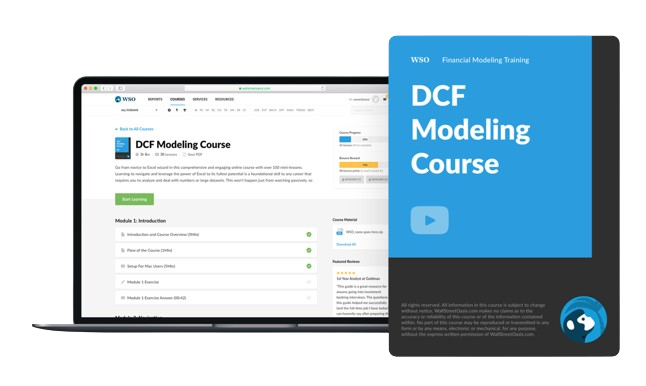Value at Risk (VaR)
The maximum loss estimated to be possible over a specific time horizon, given a certain level of certainty.
What Is Value at Risk (VaR)?
Value at Risk (VaR) is the maximum loss estimated to be possible over a specific time horizon, given a certain level of certainty. It can also be described as the worst loss that could occur over a given period under normal circumstances.
Investment and commercial banks frequently use this indicator to assess the size and likelihood of prospective losses in their institutional portfolios.
The confidence level indicates the likelihood of experiencing a loss greater than or equal to the Value at Risk (VaR) over a specified time horizon, expressed in days, weeks, months, or years (singular).
It is a tool used by risk managers to gauge and manage the degree of risk exposure. Its calculations can be used to assess individual holdings, entire portfolios, or the overall risk exposure of an organization.
It is defined as the maximum anticipated monetary loss over a specified time horizon at a particular confidence level. For instance, a portfolio will not lose more than $1 million over the following month if the 95% one-month VaR is $1 million.
Due to the possibility of individual trading desks inadvertently exposing the business to highly correlated assets, investment banks usually use VaR modeling to assess firm-wide risk.
While VaR measurements generally perform well with elliptical return distributions, such as the normal distribution, they can also be applied to non-normal distributions. However, the accuracy of results may vary, assuming the distribution of returns is known and stationary.
Key Takeaways
- Value at Risk (VaR) is a risk management used to estimate the maximum potential loss within a specified time frame and confidence level. It is commonly employed to assess and manage risk exposure in institutional portfolios.
- VaR is determined by three factors - a specific percentage or value of the loss, the period over which risk is evaluated (expressed in days, weeks, months, or years), and the confidence level.
- Three main methods - Historical, Variance-Covariance, and Monte Carlo Simulation - are used to calculate VaR. Each method has its calculations, assumptions, benefits, and drawbacks.
Key Elements Of Value At Risk (VaR)
Volatility is the most widely used and established method of measuring risk. The primary issue with volatility is that it doesn't care how an investment moves; for example, a stock can be volatile if it suddenly climbs higher.
It is based on the idea that investors are worried about the likelihood of losing money. A VaR statistic consists of three elements:
- Specific percentage or value of the loss
- Period of time during which the risk is evaluated
- Confidence level
It gives managers and investors an estimate of the maximum potential loss for investment, considering the likelihood of a significant loss within a specified confidence level.
The risk for investors is the likelihood of losing money, answering questions like "What is my worst-case scenario?" or "How much could I lose in a truly terrible month?" This is based on the presumption that investors are concerned about the likelihood of a significant loss.
VaR modeling estimates an entity's potential for loss at a specific confidence level over a defined time period.
Note
The risk will vary depending on the level of confidence selected, and as the confidence level rises, the VaR will also rise. Moreover, as the confidence level rises, it will also rise at an increasing rate.
As the holding time lengthens, the value at risk may rise, influenced by the distribution's mean. The mean of the distribution plays a role in determining how quickly VaR rises:
- If the return distribution has a mean, μ (pronounced mew), equal to 0, VaR rises with the square root of the holding period (i.e., the square root of time)
- If the return distribution has μ > 0, then VaR rises at a lower rate and eventually decreases
Thus, the mean of the distribution is a crucial determinant for estimating how VaR changes with alterations in the holding period.
VaR Methodologies
The historical technique, variance-covariance method, and Monte Carlo Simulation are the three basic approaches to calculating VaR.
Each has its own set of calculations, assumptions, benefits, and drawbacks relating to complexity, calculation speed, applicability to particular financial instruments, and other elements.
Historical Method
Calculating it is easy and simple when using the historical simulation method. It begins by determining the risk factors, including interest rates, currency exchange rates, stock prices, volatilities, credit spreads, etc.
Then, in most cases, daily data is gathered on these variables, and scenario analysis is employed to simulate daily changes. Therefore, a portfolio's daily gains or losses can be calculated using these scenarios. The historical simulation method would rank these returns from largest losses to smallest gains.
Example
For example, assume that you have calculated the daily security returns and produced a histogram of this data. You then compute the monthly VaR for this security at a 95% confidence level.
The smaller tail would display the lowest 5% of returns of the underlying distribution's returns, providing a 95% confidence level.
If you have $2,000,000 invested in a security with a one-day percentage VaR of -14.3%, then the maximum loss you should expect is $286,000 (14.3% x $2,000,000).
Suppose you have computed the returns for 300 days and ranked each day by the amount of loss. You want to calculate the VaR over a one-day time horizon with a 99% confidence level (1% significance). You would take the third worst outcome (3 / 300 = 0.01).
| Scenario Number | Loss (In USD millions) |
|---|---|
| 20 | 15.4 |
| 51 | 16.6 |
| 118 | 13.5 |
| 289 | 12.9 |
| 71 | 9.7 |
| 225 | 7.5 |
| … | … |
The one-day VaR in the above case would be USD 13.5 million at a 99% confidence level, indicating the potential loss at the 1% significance level.
Note
An advantage of this approach is that it may help identify crisis events that were previously overlooked for a specific asset class, but it does not guarantee the detection of all potential crises. On the other hand, the historical simulation approach is limited to actual historical data. It assumes that future scenarios will resemble past ones, potentially overlooking new types of risks or events.
Variance-Covariance Method
Compared to the historical method, the variance-covariance method explicitly assumes a distribution for the underlying observations. This method can be used for linearly dependent portfolios on the underlying market variables.
This approach assumes that benefits and losses are dispersed based on a certain distribution without relying on the past to guide the future.
Potential losses can, therefore, be described in terms of deviations from the mean by a standard deviation. It is also referred to as the parametric method, and it works well for risk-measuring scenarios where the distributions can be accurately approximated.
A normal distribution curve can be created using the estimated (or average) returns and standard deviation, but it involves more than simply adding these values.
Assuming the returns on these variables are multivariate normal, the portfolio value change will be normally distributed. This makes VaR calculations more intuitive.
The formula to calculate is:
VaR = (µ -zσ) * portfolio value
Where
- µ is the expected return
- z is the z-score corresponding to the desired confidence level
- σ is the standard deviation
Example
For a $250,000,000 portfolio, the expected daily 1-week portfolio return and standard deviation are 0.00174 and 0.0128, respectively. So, how do we calculate the 1-week VaR with a 95% confidence level?
VaR = (µ -zσ) * portfolio value
= [0.00174 - 1.65 (0.0128)] * $250,000,000
= - 0.01938 * $250,000,000
= - $4, 845,000
The manager can be 95% confident that the maximum 1- week loss will not exceed $4,845,000.
Estimated (or average) returns and standard deviation can be combined to create a normal distribution curve.
The variance-covariance approach is conceptually identical to the historical approach, except that we employ the well-known curve rather than actual data.
The benefit of the normal curve is that, given a desired confidence level, it helps us determine the values corresponding to the worst 5% and 1% of the data based on the standard deviation. They depend on the standard deviation and the desired level of confidence.
Using a normal distribution curve gives a clear overview of the most likely return on an asset. With the normal distribution curve formed, it is fairly easy to determine the probability of a certain return occurring.
The normal distribution assumption may not accurately reflect market conditions, potentially leading to inaccurate risk assessments, especially when influenced by off-market factors.
Monte Carlo Method
The Monte Carlo method simulates millions of valuation options for the underlying assets and generates scenarios using random samples.
It entails creating a model to predict future stock price returns and putting it through numerous fictitious trials. While any technique generating random trials is broadly called a Monte Carlo simulation, the term itself does not specify the underlying process.
A Monte Carlo simulation is essentially a "black box" generator of random, probabilistic results for most users. The Monte Carlo approach involves six steps:
- Calculate the portfolio's current value using the risk factors' current values
- For the change in x (Δxi), use sampling procedures from the multivariate normal probability distribution to generate random values for the risk factors, assuming a multivariate normal distribution is appropriate
- Find the risk factor values at the end of the period using the sampled values
- Utilize the most recent risk factor values to revalue the portfolio
- The degree of the loss will depend on the difference between the revalued and present portfolio values
- To generate a loss distribution, repeat steps two through five
Once this process is complete, we can calculate daily VaR and expected loss using an approach similar to historical simulation.
For example, if a Monte Carlo model produces 1000 trials, the daily VaR with a 99% confidence level will be the tenth worst loss (=1% x 1000), and the expected loss will be the average of the four worst losses.
Note
Remember, the daily values will be multiplied by the square root of time to calculate longer-period VaR and expected losses for the specified time horizon.
Formula
The formula is:
VaR(T,X) = VaR(1, X) * √T
ES(T, X) = ES(1,X) * √T
Where:
T = T - (day) time horizon
This method can address many risk factors by assuming an appropriate underlying distribution and accurately simulating the correlations between the risk components.
For instance, a risk manager can simulate 1000 events and then calculate the likelihood that a particular event would occur.
The risk manager only needs to supply the mean and standard deviation parameters and assume an appropriate distribution for potential outcomes to perform the simulations.
Using any distribution type with the Monte Carlo simulation is a big advantage, provided the correlation between the risk components can be established.
The method's main drawback is its slow and computationally demanding nature, especially notable for large portfolios with complex models and many simulations.
The time-consuming Monte Carlo technique is frequently used for large portfolios, especially when dealing with complex models and many simulations.
Disadvantages of Value at Risk (VaR)
The main disadvantages are:
- Arbitrary Parameters: The VaR measure relies on two arbitrary parameters, holding duration, and confidence level, introducing model risk due to potential inaccuracies in assumptions and implementation errors.
- Lack of Loss Communication: VaR fails to convey the actual size or scope of potential losses, offering only the maximum loss for a given confidence level and holding duration.
- Risk Exposure Variation: Two return distributions with the same VaR may exhibit significantly different risk exposures, highlighting VaR's limitation in capturing the full risk profile.
- Portfolio Manager Example: Selling out-of-the-money options poses a serious problem, as they yield positive returns most of the time. However, the resulting loss can be substantial in the unfavorable event of expiring out of the money.
- Misleading Focus: Focusing solely on reducing VaR may be misleading, as it neglects the magnitude of potential losses, especially in scenarios with diverse risk exposures.
Advantages of Value at Risk (VaR)
Value at Risk (VaR) offers several advantages in risk management, such as:
- Concise Measure of Loss: VaR provides a clear and understandable measure of potential financial losses, aiding decision-makers in evaluating and managing risk exposure.
- Portfolio Diversification: Accommodating portfolio diversification, VaR captures the collective risk of various assets, providing a comprehensive view of risk in a diversified investment portfolio.
- Time Horizon Adaptability: VaR's ability to quantify risk over different time horizons enhances its adaptability to various investment strategies, making it a versatile tool in risk management.
- Stress Testing Facilitation: VaR facilitates stress testing, allowing institutions to assess their resilience against extreme market conditions, contributing to effective risk management.
- Widely Accepted and Regulatory Compliance: In the financial industry, VaR is a regulatory requirement for many institutions, fostering standardization and comparability in risk assessment practices.
- Quantifiable and Standardized Approach: Despite criticisms, VaR remains a valuable tool, offering a quantifiable and standardized approach to risk measurement and management, contributing to improved risk analysis and decision-making.




or Want to Sign up with your social account?